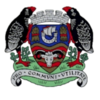Invercargill
Waihōpai (Māori) | |
|---|---|
 Spring in 2005, Esk Street, Invercargill | |
| Motto(s): | |
 Invercargill in the South Island | |
| Coordinates: 46°24′47″S 168°20′51″E / 46.41306°S 168.34750°E | |
| Country | New Zealand |
| Island | South Island |
| Region | Southland |
| Communities | Bluff |
| Settled by Europeans | 1853 |
| Named for | Inbhir – Scottish Gaelic for river's mouth and William Cargill |
| Government | |
| • Mayor | Nobby Clark |
| • Deputy Mayor | Tom Campbell |
| • MPs | |
| • Territorial authority | Invercargill City Council |
| Area | |
| • Territorial | 389.92 km2 (150.55 sq mi) |
| • Urban | 62.95 km2 (24.31 sq mi) |
| Population (June 2024)[2] | |
| • Territorial | 58,600 |
| • Density | 150/km2 (390/sq mi) |
| • Urban | 51,700 |
| • Urban density | 820/km2 (2,100/sq mi) |
| Demonym | Invercargillite |
| Time zone | UTC+12 (NZST) |
| • Summer (DST) | UTC+13 (NZDT) |
| Postcode(s) | 9810, 9812 |
| Area code | 03 |
| Local iwi | Ngāi Tahu |
| Website | icc |
Invercargill (/ˌɪnvərˈkɑːrɡɪl/ IN-vər-KAR-ghil, Māori: Waihōpai)[3] is the southernmost and westernmost city in New Zealand, and one of the southernmost cities in the world. It is the commercial centre of the Southland region. The city lies in the heart of the wide expanse of the Southland Plains to the east of the Ōreti or New River some 18 km (11 miles) north of Bluff, which is the southernmost town in the South Island. It sits amid rich farmland that is bordered by large areas of conservation land and marine reserves, including Fiordland National Park covering the south-west corner of the South Island and the Catlins coastal region.
Many streets in the city, especially in the centre and main shopping district, are named after rivers in Scotland. These include the main streets Dee and Tay, as well as those named after the Tweed, Forth, Tyne, Esk, Don, Ness, Yarrow, Spey, Eye and Ythan rivers, amongst others.
The 2018 census showed the population was 54,204, up 2.7% on the 2006 census number and up 4.8% on the 2013 census number.[4]
- ^ https://icc.govt.nz/your-council/ Invercargill City Council, 'Your Council'
- ^ "Aotearoa Data Explorer". Statistics New Zealand. Retrieved 26 October 2024.
- ^ "List of Place Names – Māori Language Resources". Te Taura Whiri i te Reo Māori – Māori Language Commission. Archived from the original on 9 June 2015. Retrieved 16 March 2010.
- ^ "2018 Census population and dwelling counts | Stats NZ".
